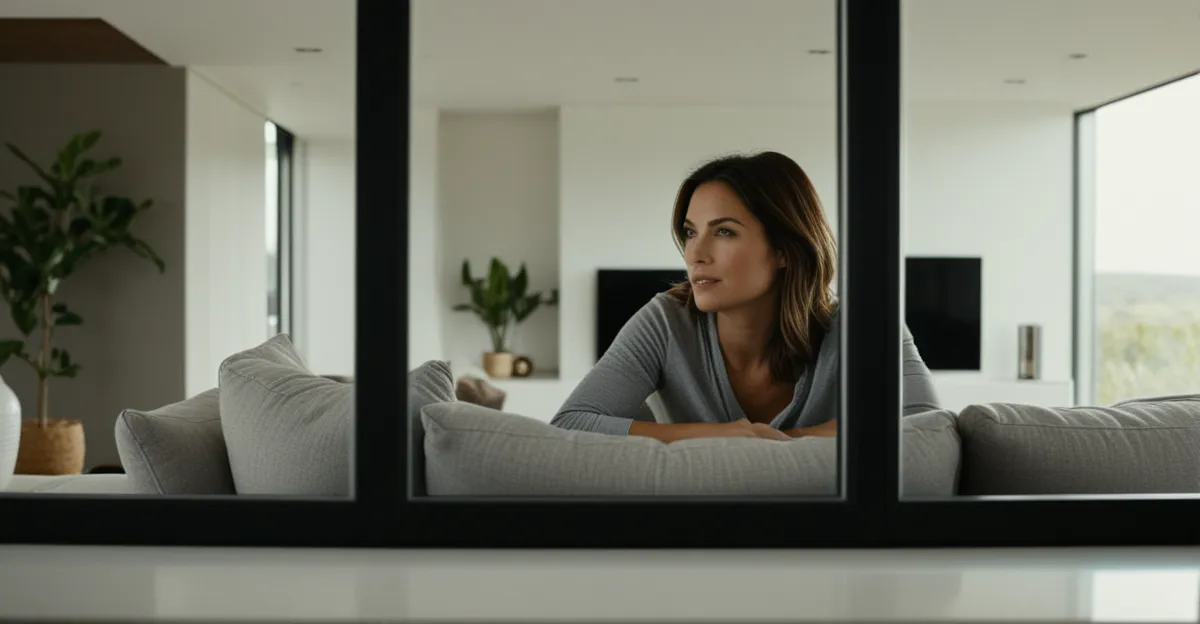Understanding the Relationship Between Space and Well-Being
The transformation of physical space can significantly impact mental well-being and emotional health. The environment where individuals live and spend time holds substantial influence over their psychological state. Research indicates that structured, aesthetically pleasing, and well-organized spaces can lead to positive emotional outcomes. Environments that are cluttered or disorganized, on the other hand, contribute to stress and anxiety.
Psychologically, there are several concepts regarding how space affects our emotions. Biophilic design, for example, emphasizes the inclusion of natural elements like plants and water, fostering relaxation and improved mood. Additionally, the arrangement and color of furniture can alter perceptions and feelings within a space, highlighting the interplay between physical surroundings and personal well-being.
Also to see : How Can Small Touches Transform Your Living Space?
Furthermore, findings from recent studies underscore this link, showing that intentional modifications to living environments—such as space transformation—can enhance overall happiness and reduce depression symptoms. Incorporating user-friendly, adaptable designs enables individuals to create a personal oasis that complements their psychological and emotional needs, thus promoting a healthier lifestyle.
Practical Tips for Transforming Your Space
When it comes to enhancing your mental well-being and emotional health, a few strategic changes in your home environment can be game-changers. This section delves into practical strategies to transform your space into a sanctuary of wellness.
Also to read : How Can You Enhance Your Living Space With Minimal Effort?
Decluttering for Clarity
Decluttering is more than just tidying up. It’s about creating an environment that promotes mental clarity and peace. By removing excess items that create chaos, you streamline your surroundings, which can directly reduce stress levels. Start by categorizing your belongings into groups: keep, donate, or discard. This structured approach minimizes decision fatigue. Numerous case studies show that individuals who declutter experience increased productivity and a sense of lightness, freeing their minds for more essential tasks.
Utilizing Color Psychology
The colors that surround you can significantly affect your mood and emotions. For example, soft blues and greens are known to have calming effects, making them ideal for bedrooms and relaxation areas. Meanwhile, warm tones like oranges and yellows can energize and inspire, perfect for kitchens and workspaces. Experts suggest using a balanced palette to ensure you are supporting various activities in the home with the right emotional backdrop, enhancing overall wellness strategies.
Incorporating Natural Elements
Integrating natural elements into your indoor spaces taps into biophilic design principles, which are proven to boost happiness and reduce stress. Plants, for example, not only purify the air but also bring a sense of life and tranquility. Natural light is another critical factor, as exposure to sunlight can elevate mood and increase energy levels. Transforming your space with these elements can transform your daily experience, making your home a nurturing environment for both mind and body.
Creating a Personalized Space
Transforming your personal space into a reflection of your unique style can significantly enhance individual well-being. The importance of incorporating personalized design lies in the deep emotional and psychological connection people have with their surroundings. When your home environment aligns with your personal aesthetics and preferences, it promotes a sense of comfort and belonging.
Understanding Personal Preferences
To create a truly personalized design, start by identifying what elements resonate most with you—whether it be specific colours, textures, or themes. This personal touch not only enhances the aesthetic appeal but also fosters a stronger emotional connection to your space. The psychological benefits are substantial; having a space that reflects your personal tastes can lead to increased happiness and reduced stress.
Flexible Spaces for Dynamic Needs
As lifestyles continually evolve, designing adaptive environments becomes paramount. Flexible spaces that can effortlessly transition to meet changing needs are key. For example, a home office that doubles as a guest room or a living room that adapts for exercise can be crucial in promoting overall well-being. Such multifunctional designs help maintain mental agility and cater to diverse lifestyle needs.
Mindfulness and Intentional Design
Integrating mindfulness into your home design can transform how you interact with your environment. By focusing on intentional design—where each piece and layout serves a purpose—you cultivate a space conducive to reflection and tranquility. Techniques such as choosing calming colours or minimizing distractions can foster a mindful and stress-free atmosphere, ultimately enhancing your daily well-being.
Case Studies and Testimonials
Real-life transformation stories often provide compelling insights into the profound impact of space transformation on both mental well-being and emotional health. By examining these cases, we unlock a wealth of understanding about how thoughtfully designed spaces can enhance one’s quality of life.
Significant Transformations and Insights
One standout case involves a family who undertook a significant home improvement project. By embracing wellness strategies such as decluttering and introducing biophilic elements, they reported dramatic reductions in stress and increased happiness. These changes particularly demonstrated the power of natural elements, as the introduction of indoor plants and maximized sunlight drastically improved the home atmosphere.
Testimonials and Personal Feedback
Numerous testimonials detail individuals who experienced enhanced well-being following space redesign. For example, one testimonial from a young professional highlights how incorporating calming color palettes and personal artefacts into newly refurbished spaces significantly lifted their mood. This account underscores the importance of integrating personalized design to foster a stronger connection to the environment.
Before and After: Emotional Health Benefits
By analysing before-and-after scenarios, the emotional benefits of adaptive environments come to the fore. Homes previously characterized by clutter and chaos transformed into ordered, serene sanctuaries, paving the way for improved mental health. Residents frequently report feelings of contentment and tranquillity—undeniable evidence of the power of strategic space transformation on psychological well-being.





